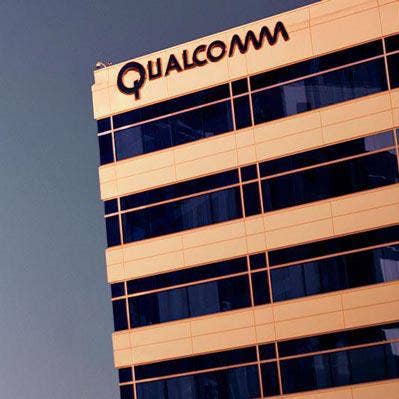Qualcomm Wireless Vision Blends, Wi-Fi 6, 5G As Firm Unveils Networking Pro Platform
Qualcomm's wireless vision unities Wi-Fi 6 and 5G, the company revealed on Tuesday alongside its new Wi-Fi 6 networking platform series, Qualcomm Networking Pro.

Cellular and Wi-Fi are converging, especially as technologies like 5G and Wi-Fi 6 enter the fray.
Qualcomm Technologies, a network infrastructure subsidiary of U.S. chipmaker Qualcomm Inc., has been historically focused on cellular technologies, but the company on Tuesday revealed its wireless vision that will bring together the two newest cellular and Wi-Fi connectivity options. At it's Wi-Fi 6 day event on Tuesday, the company also ripped the covers off its new second-generation Wi-Fi 6 networking platform series, Qualcomm Networking Pro.
"You can't just be in a Wi-Fi provider and expect to operate well on the cellular side, and vice versa, and this is self-evident with the transition to Wi-Fi 6," said Jesse Burke, marketing manager for Qualcomm. "You need to be able to cross-pollinate those technology portfolios -- [Wi-Fi and cellular] are two mutually-beneficial technologies."
[Related: 5G Wireless in 2019: The 7 Biggest Things To Know]
Qualcomm Technologies said that its new platform contains a brand-new chipset architecture, making it a great option for densely-congested networks and highly-populated environments that demand high-bandwidth and low-latency.
The Qualcomm Networking Pro series comes in four flavors for different computing needs. The Networking Pro 1200 Platform supports up to 12 spacial streams of Wi-Fi- 6 connectivity, the Networking Pro 800 supports up to 8 spacial streams, the 600 Pro platform has been designed for up to 6 spacial streams, and the Networking pro 400 supports up to four spacial streams of Wi-Fi 6. The entire series supports multi-user, multiple-input, multiple-output
(MU-MIMO) technology, as well as Orthogonal frequency-division multiple access (OFDMA), two next-generation wireless and data transmission features used in Wi-Fi 6.
The Networking Pro Series relies on Qualcomm's "maximum user networking architecture," the company's design that can handle very high-density enterprise and carrier environments of up to 1,500 users on one access point at the same time, Burke said.
The platform means "a lot more radios, connected to a lot more devices and delivering data to a lot more users," he said.
"For customers, this means as you enter into spaces like stadiums and large office building and so many more clients are being connected to the network, you're not going to necessarily see drop-offs and buffering when you're trying to do activities like FaceTime," Burke said.
The Qualcomm Networking Pro Series is now generally available, the company said.
At the same time, mobile traffic is set to grow by 7 times over the next five years as video traffic and user-generated traffic takes off and wireless traffic is offloaded to mobile. Wi-Fi 6 and 5G have to work together to give users high-speed, reliable connectivity for all their connected devices, Burke said.
"It's become clear that uplink data is going to be a necessary requirement in the 5G era -- it's defining feature," he said. "A lot of times when you're capturing or streaming video which requires uplink support, the quality can suffer if you're on a Wi-Fi network."
Qualcomm said its FastConnect 6800 product will ship with both uplink and MU-MIMO support, a competitive differentiation for the company, Burke said. FastConnect is a subsystem of the Qualcomm Snapdragon mobile compute platform.
While Qualcomm's cellular and Wi-Fi products have very distinct attributes, the vendor's expertise acorss both portfolios are helping to accelerate new features within the Networking Pro and FastConnect line, he said.
Qualcomm is a technology partner to some of the largest competitors in the wireless space, including Aruba Networks, a HPE company, Belkin, Netgear, and Ruckus, which was acquired by CommScope in April.